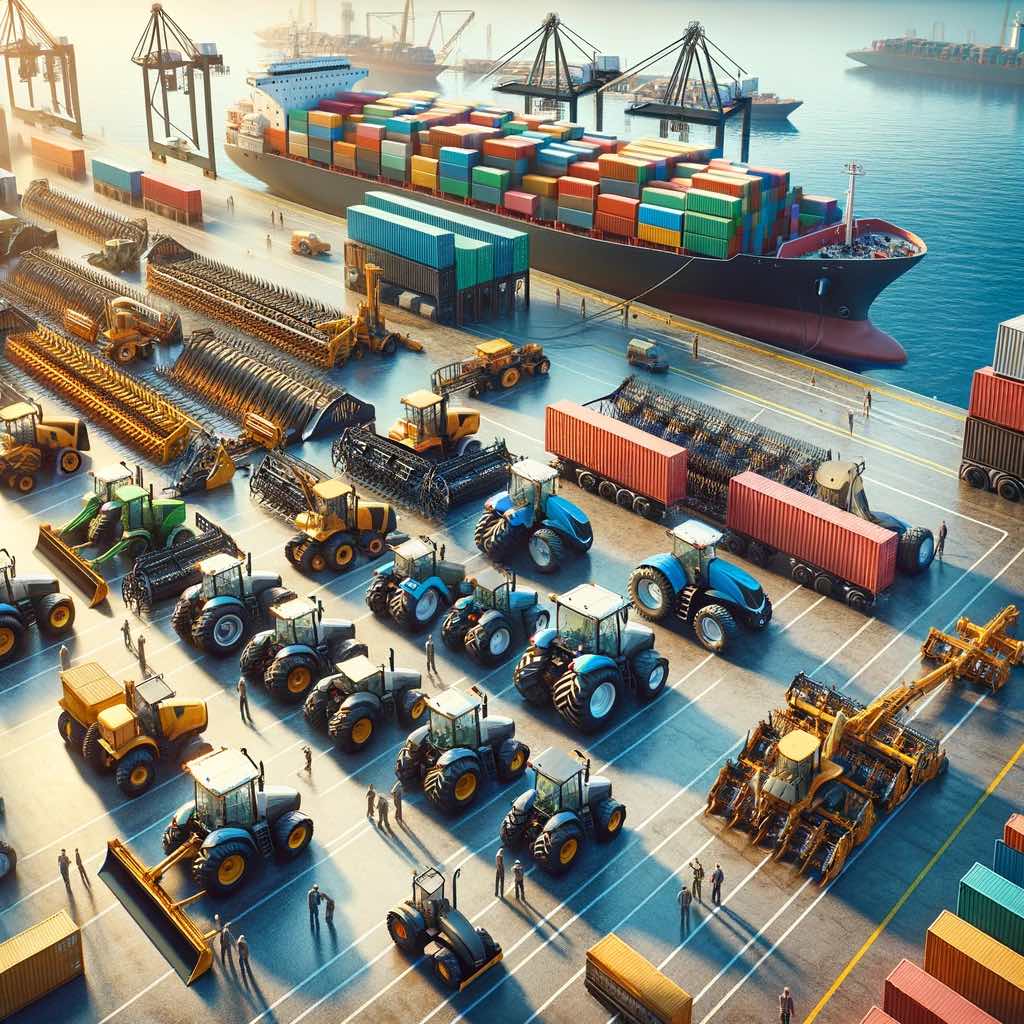The export of agricultural machinery, whether new or used, is a significant segment of the UK’s trade industry. However, it requires navigating a maze of customs regulations, compliance with plant health standards, and ensuring all documentation is in order. This guide delves into the key aspects of agricultural machinery export, including the specific requirements for Phytosanitary Certificates (PC), customs procedures, and transportation logistics, particularly for exports to the EU.
1. Importance of Exporting Agricultural Machinery from the UK
Agricultural machinery, such as tractors, ploughs, and combine harvesters, is crucial for farming activities worldwide. The UK, being a key manufacturer and exporter of such equipment, plays a pivotal role in supplying machinery to countries across Europe and beyond. Exporting this machinery, however, necessitates strict adherence to various export laws and regulations, especially post-Brexit, when new customs checks and standards were introduced.
2. Key Steps for Exporting Agricultural Machinery
A. Documentation and Certification Requirements
Before you can export agricultural machinery, it’s essential to have the following documents:
- Commercial Invoice: This outlines the details of the machinery, including value, make, model, and year of manufacture. It is the basis for customs to assess duties and taxes.
- Packing List: Describes the contents of the shipment, including quantities, packaging type, and weight.
- Customs Declaration: Must be filled out with the correct commodity codes based on the Harmonized System (HS). For instance, ploughs use HS code 8432 10 00, and tractors may use 8701 94 10.
- Phytosanitary Certificate (PC): For used machinery, this is a critical document. It certifies that the machinery is free from soil or plant debris, reducing the risk of spreading pests and diseases. The certificate must be issued by an authorized plant health inspector.
B. Phytosanitary Certificate (PC) for Used Machinery
Used agricultural machinery must meet EU’s plant health standards. Before export, all machinery should be thoroughly cleaned to remove any soil and plant material, which could harbor pests. The inspection for this takes place at a location agreed upon in the export documentation.
Without the Phytosanitary Certificate, your machinery will not be allowed to cross into the EU or other countries with strict plant health regulations. The need for this certificate makes it vital for exporters to schedule plant health inspections well in advance of shipment.
3. Exporting Agricultural Machinery to the EU Post-Brexit
Following Brexit, there have been several changes to the way agricultural machinery is exported from the UK to the EU. These changes include new customs procedures and the need for additional documentation such as:
- EORI Number: Both the exporter and the importer must have an Economic Operator Registration and Identification (EORI) number.
- TRACES NT System: The Trade Control and Expert System New Technology (TRACES NT) is required to manage and track the movement of goods like plants, animals, and machinery. When exporting machinery that needs a Phytosanitary Certificate, a CHED-PP (Common Health Entry Document for Plants, Plant Products, and Plant-Based Machinery) must be created.
- Customs Declarations: These must be completed accurately, including all relevant commodity codes, values, and transport details.
4. Transportation and Border Control for Agricultural Machinery
A. Logistics and Routes
Agricultural machinery exports to the EU, especially via the Dover to Calais route, require careful planning. The machinery must pass through designated Border Control Posts (BCP), such as the one at Calais. Ensure that all documents, including the CHED-PP, PC, and commercial invoices, are ready for inspection.
B. Transport Companies
Whether you’re using a third-party transport company or handling logistics in-house, it is crucial to select a reputable company with experience in cross-border transport of heavy machinery. If using a transport company, include the company’s contact information and arrange a clear plan for the transport of goods.
5. Compliance with Customs and Phytosanitary Requirements
Non-compliance with customs or phytosanitary regulations can result in significant delays, additional costs, or even fines. For instance, improperly cleaned machinery could be rejected at the EU border, requiring costly re-cleaning or return to the UK. Ensuring that machinery is inspected, and all documentation is correct, minimizes these risks.
6. Common Issues in Agricultural Machinery Export
A. Documentation Errors
One of the most common issues when exporting agricultural machinery is incomplete or incorrect documentation. Make sure that:
- The commercial invoice matches the goods being shipped.
- The commodity codes are correct and correspond to the machinery being exported.
B. Delays in Phytosanitary Inspections
For used machinery, scheduling the plant health inspection at the last minute can lead to delays. Book the inspection well in advance, ensuring that the machinery is cleaned and ready.
Conclusion
The export of agricultural machinery from the UK to the EU or other countries involves navigating complex customs and phytosanitary regulations. By ensuring that your machinery meets all health standards and that all documentation is correct, you can facilitate a smooth and cost-effective export process. Staying compliant with post-Brexit export procedures is essential to avoid delays and penalties, making careful planning and expert support crucial to success.


